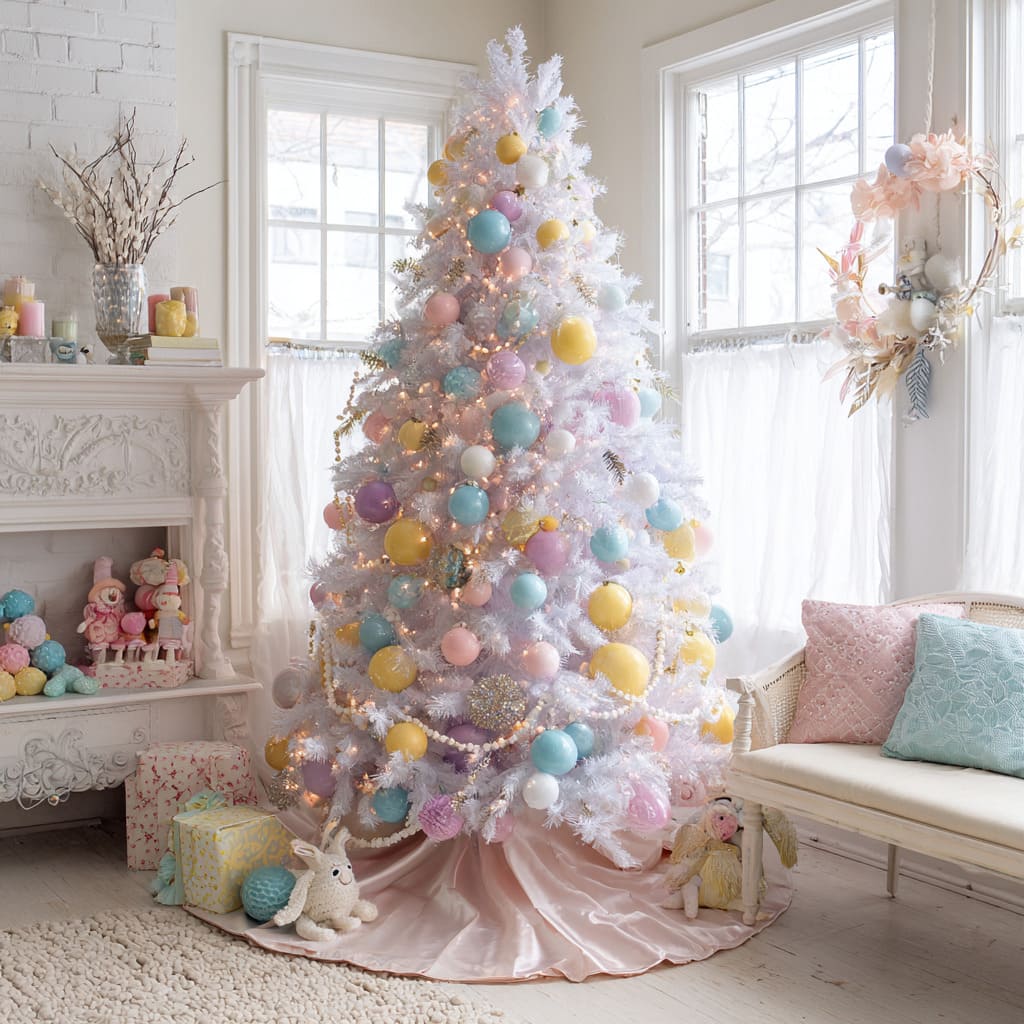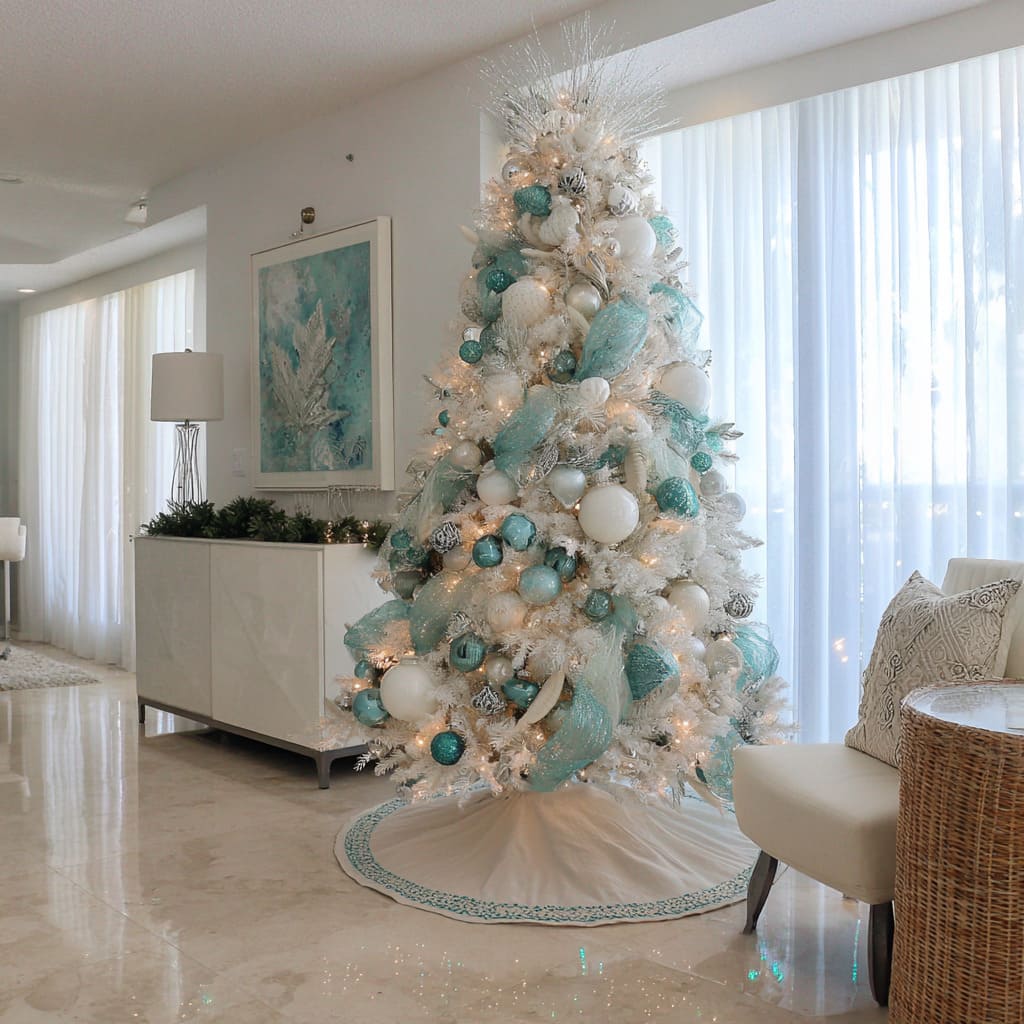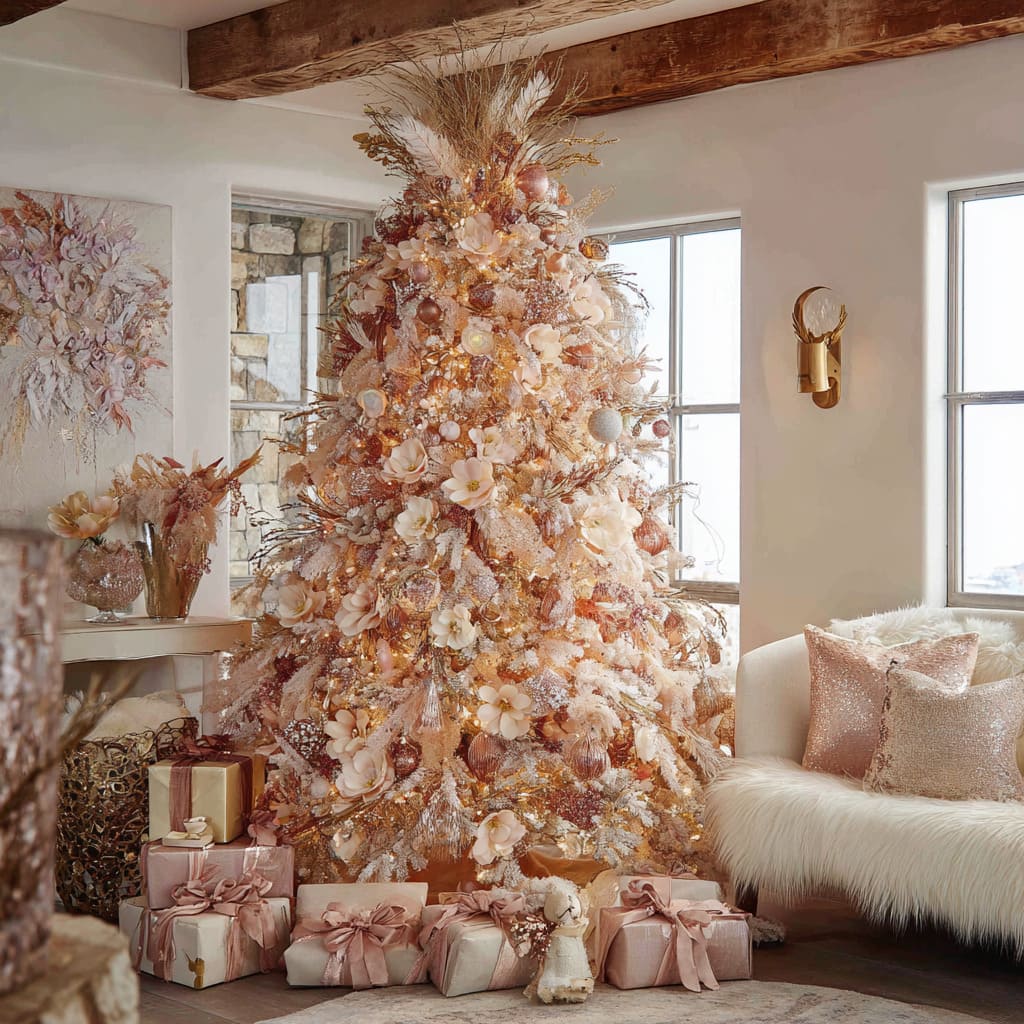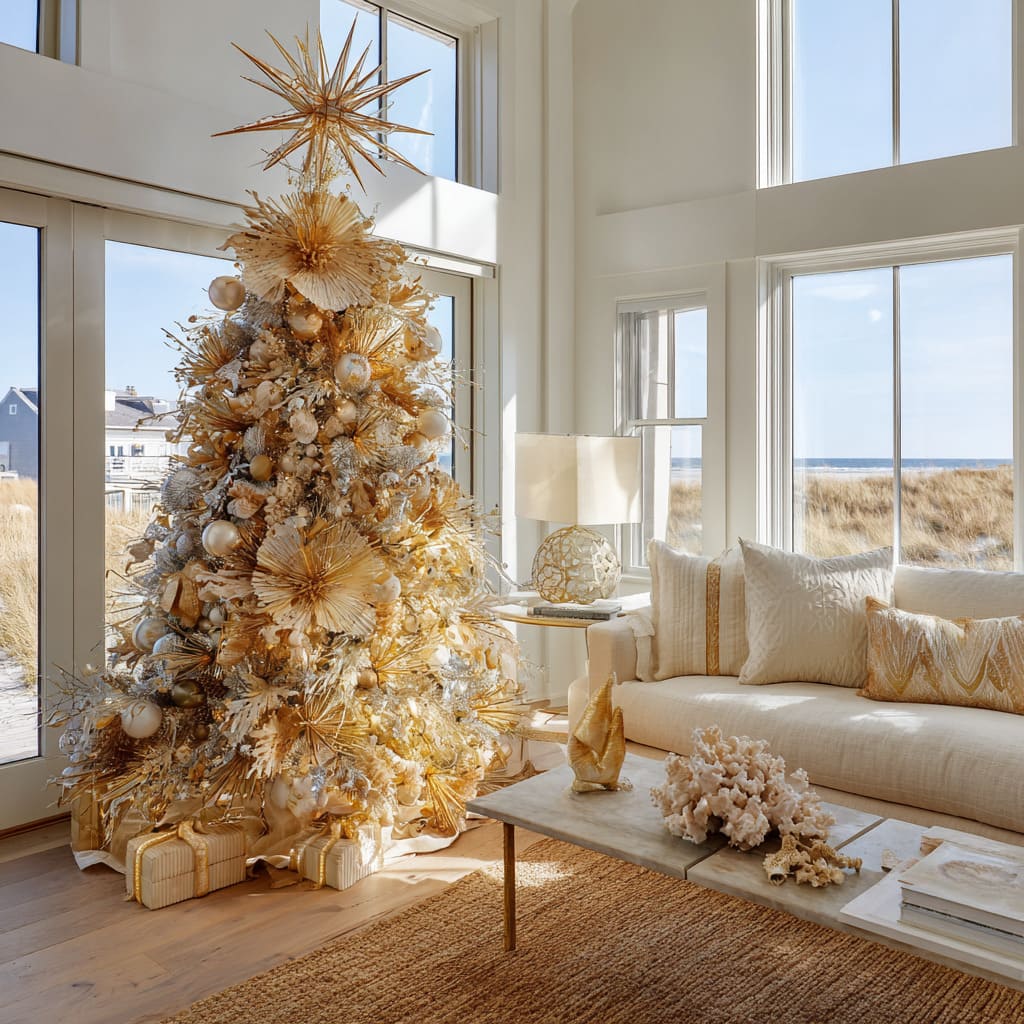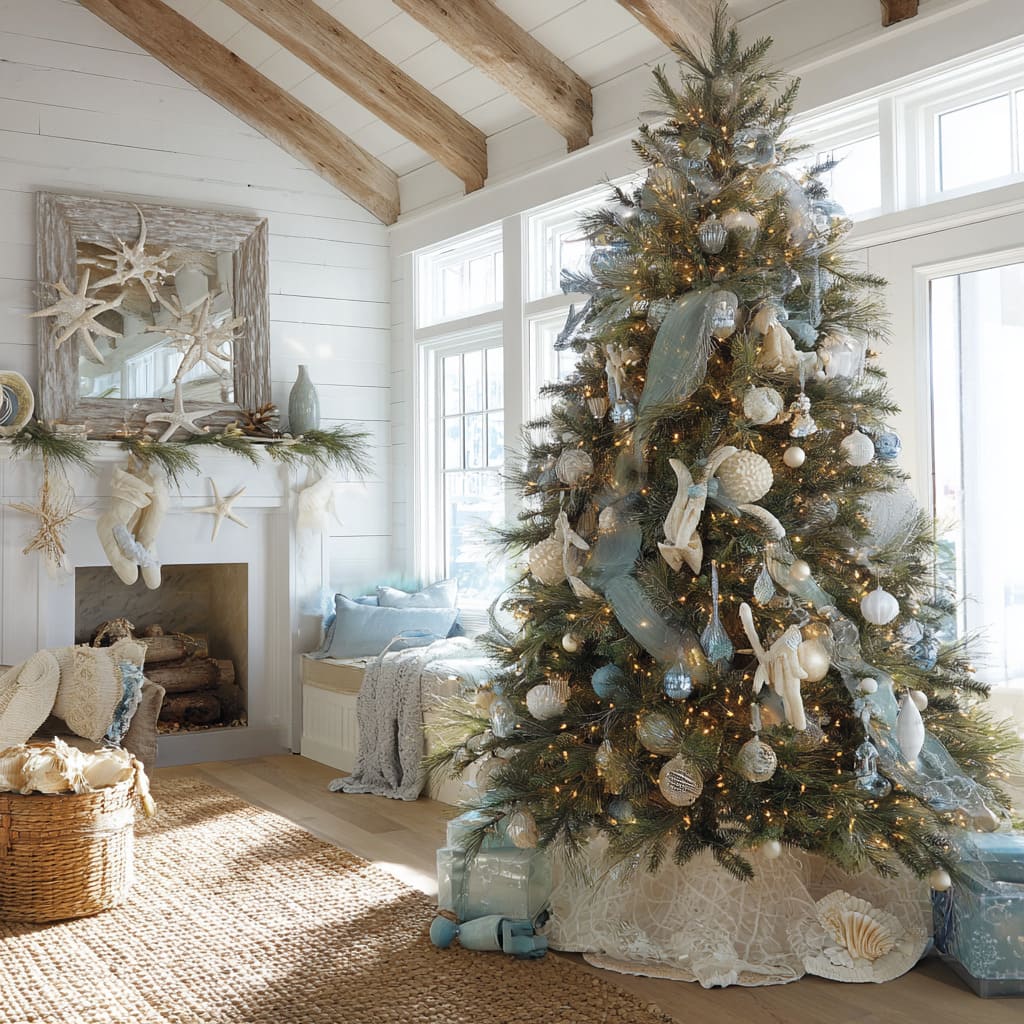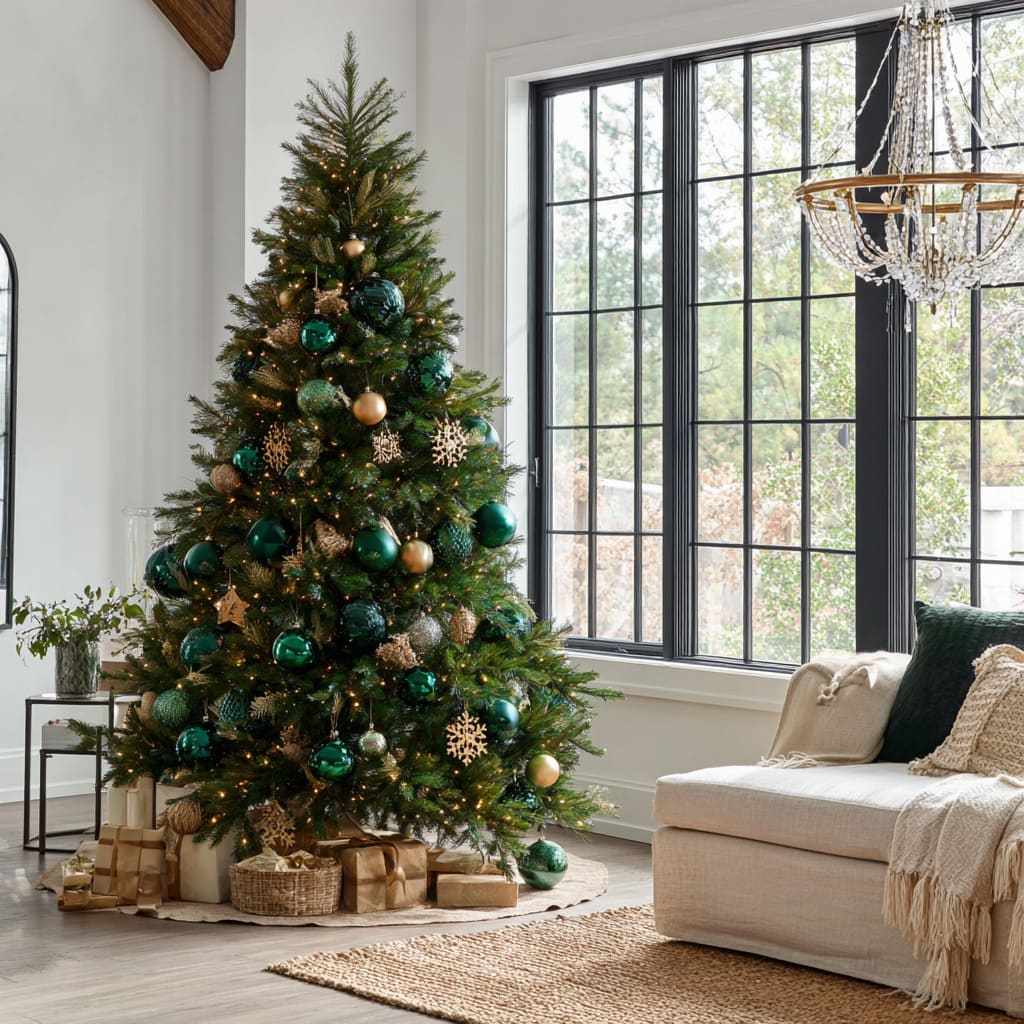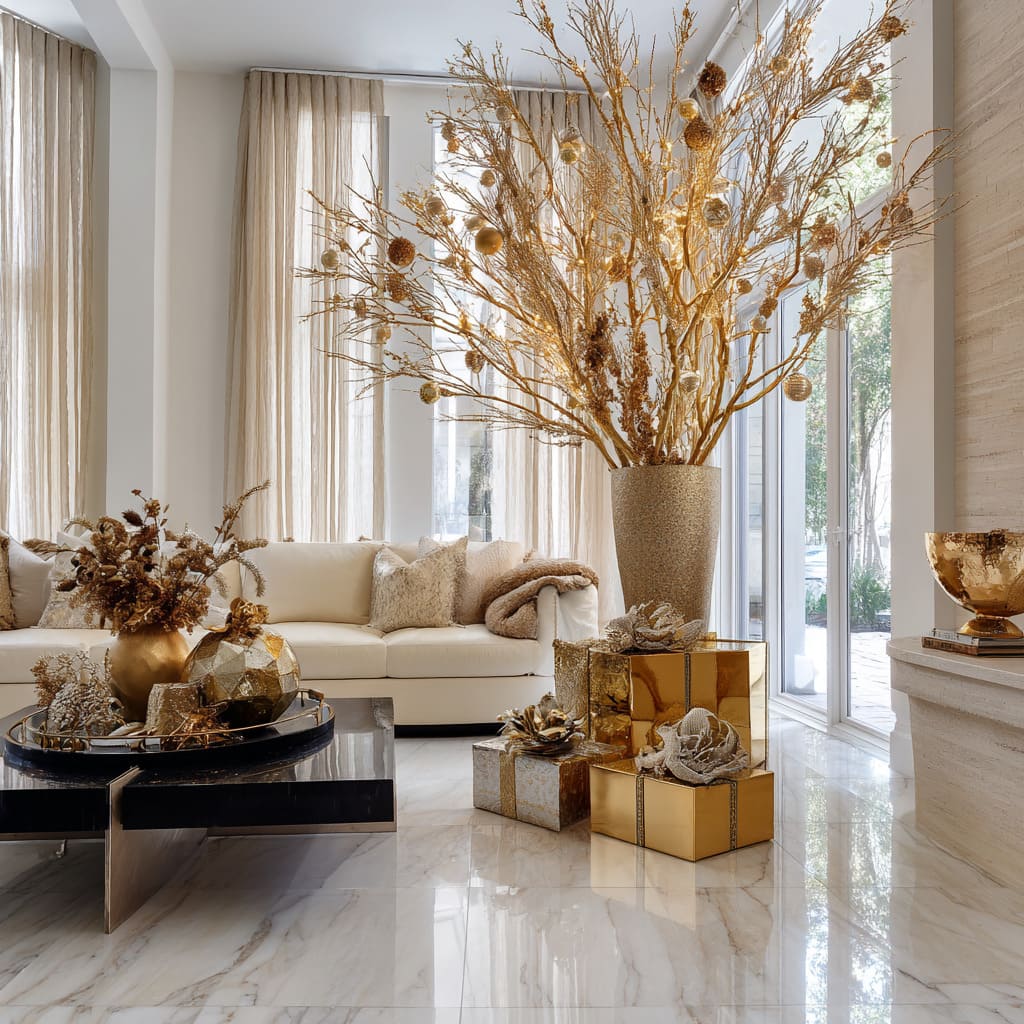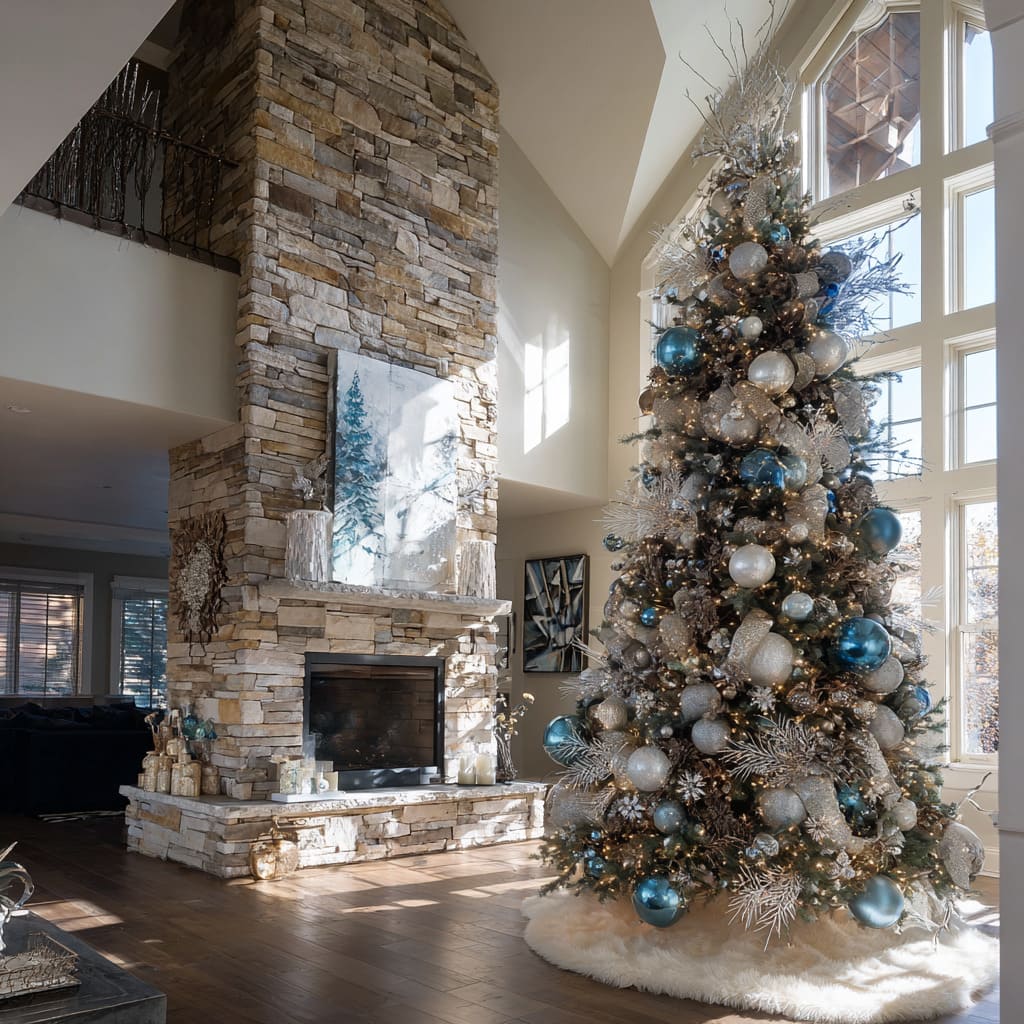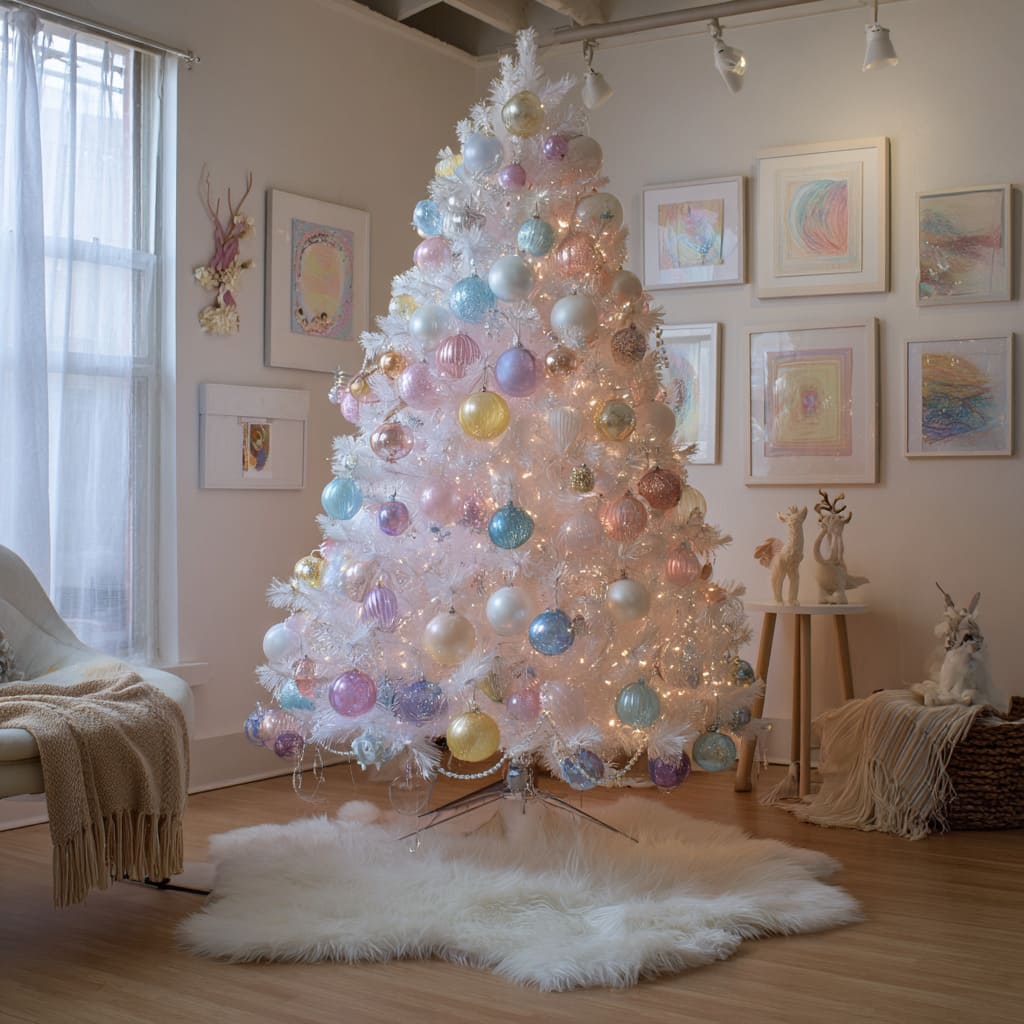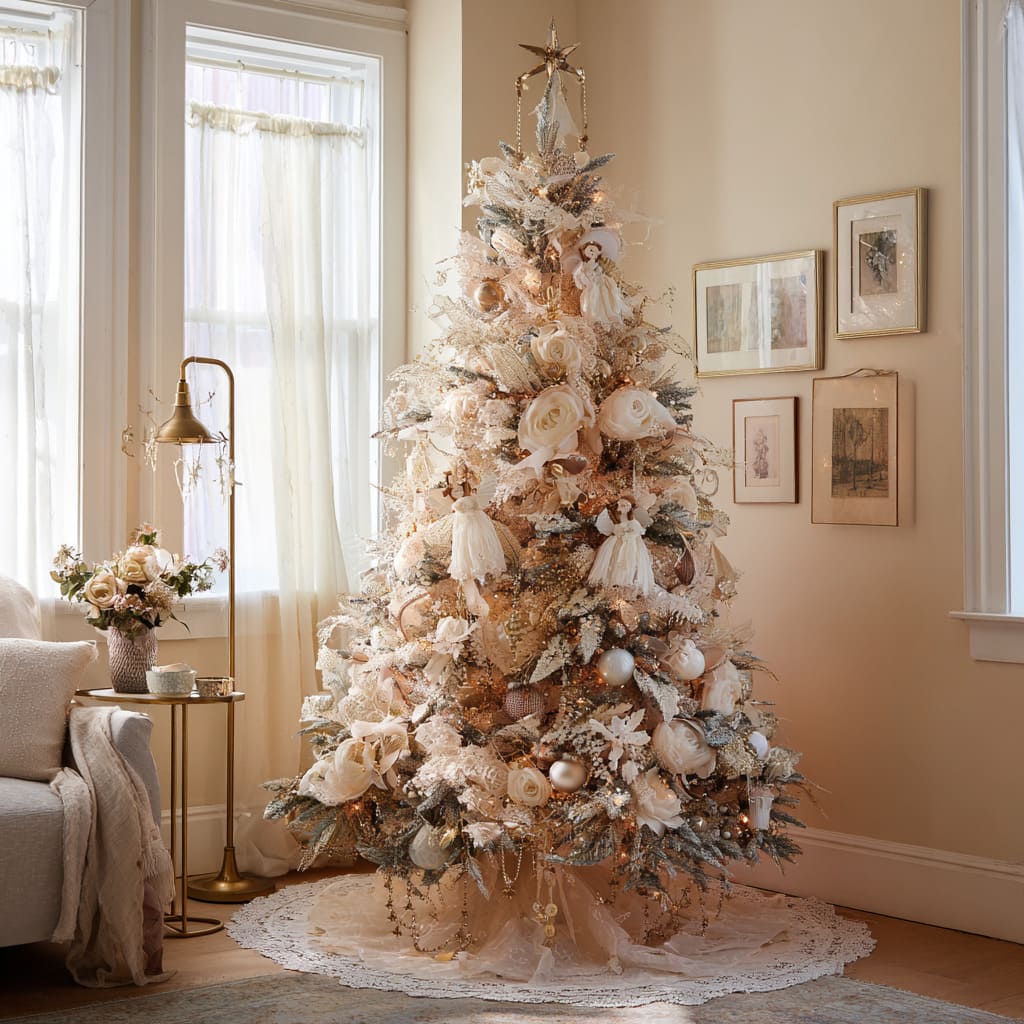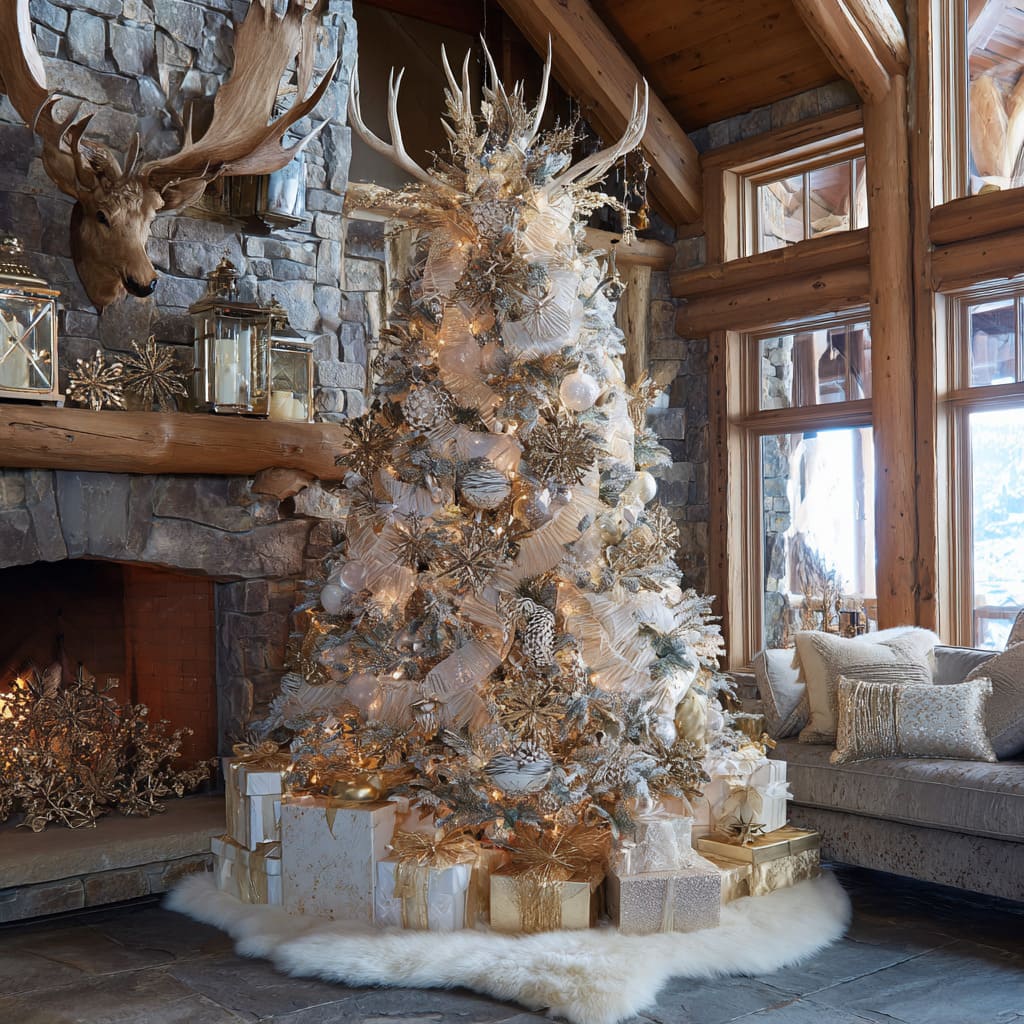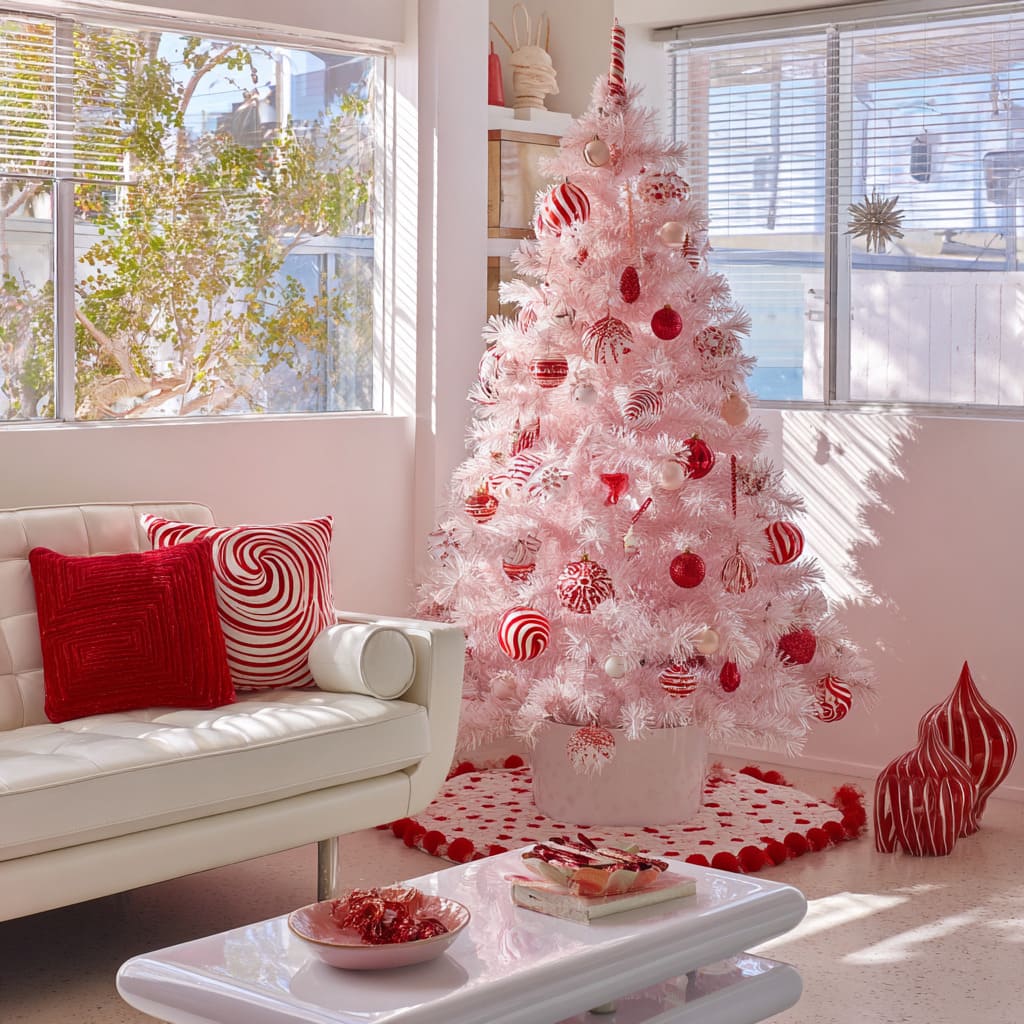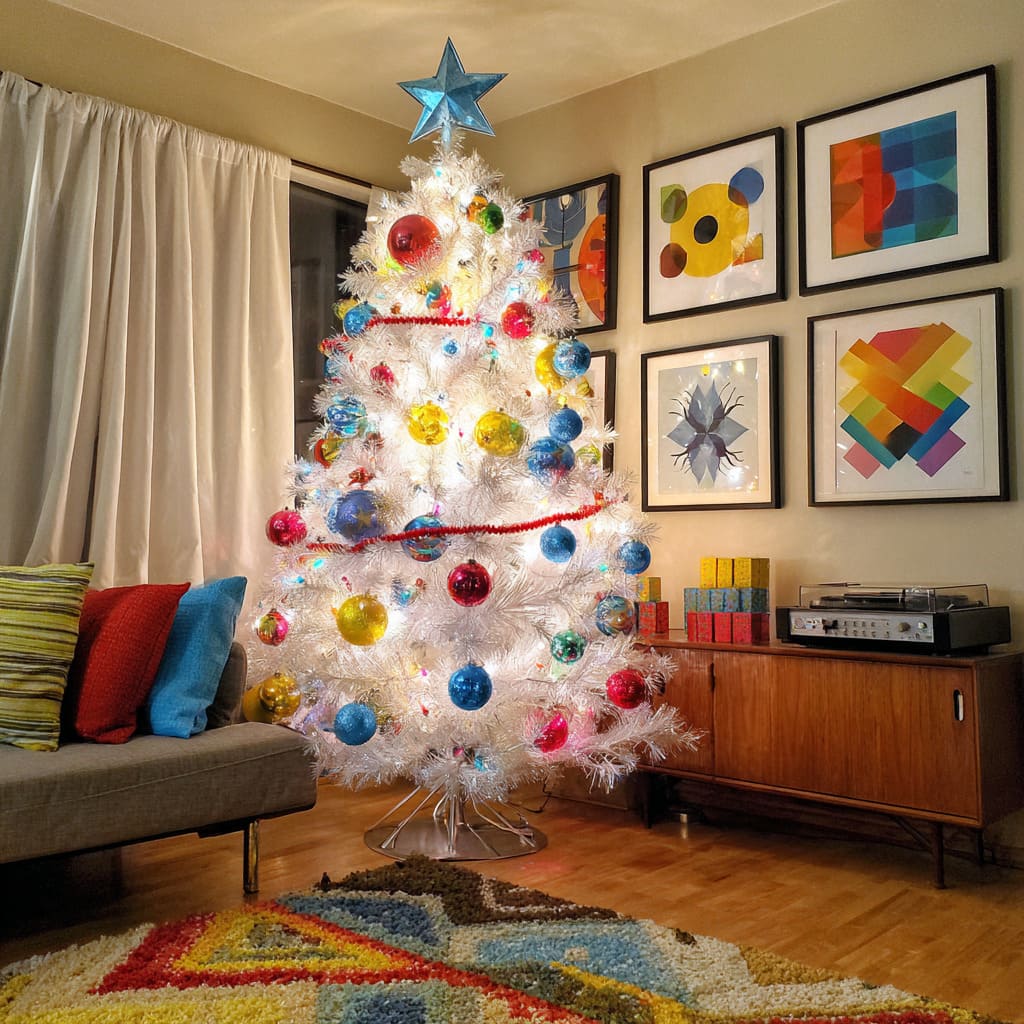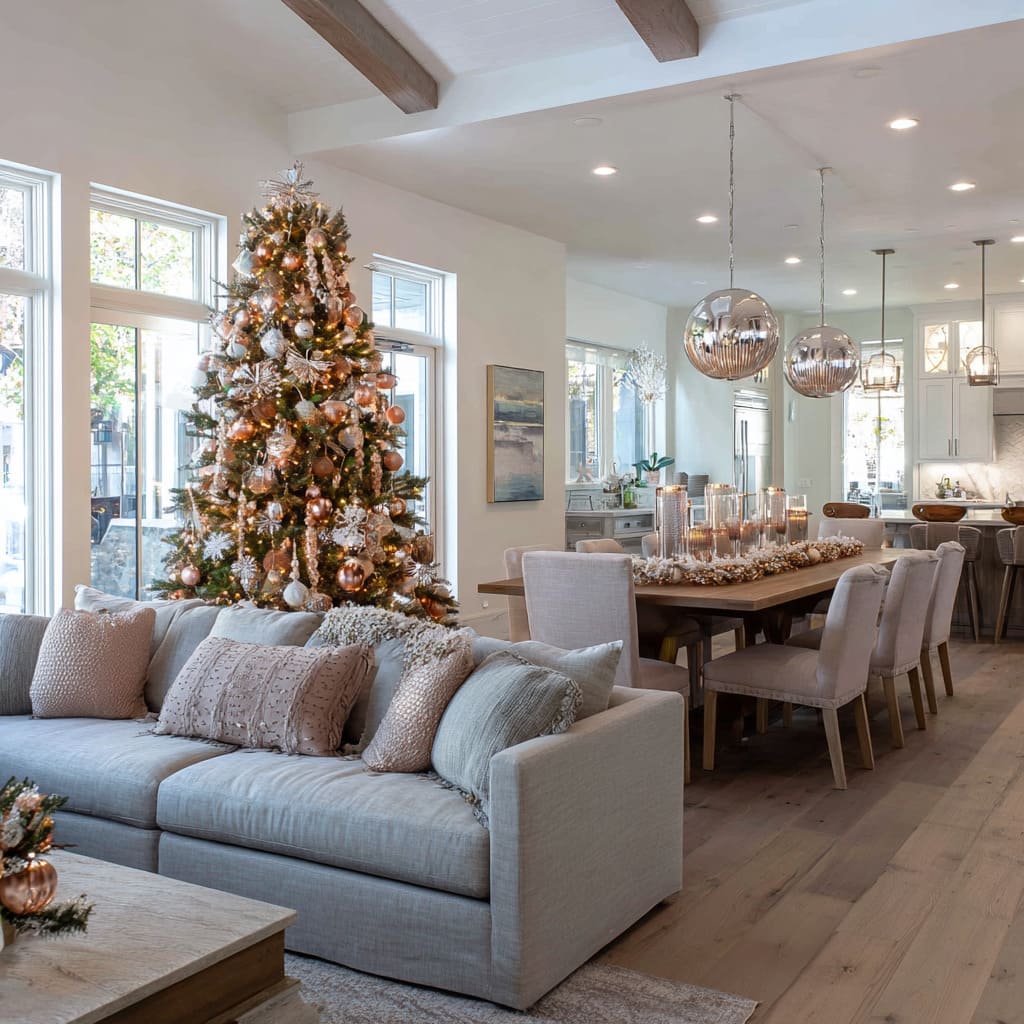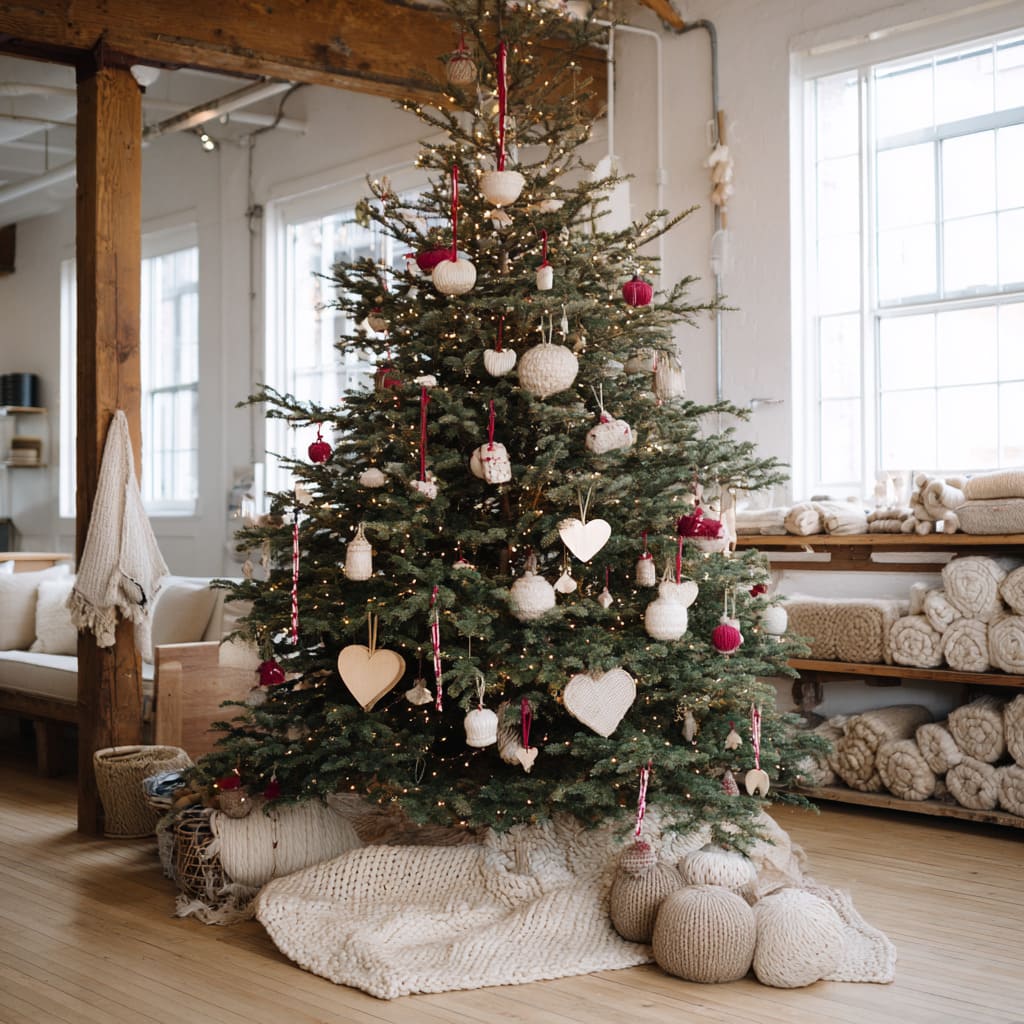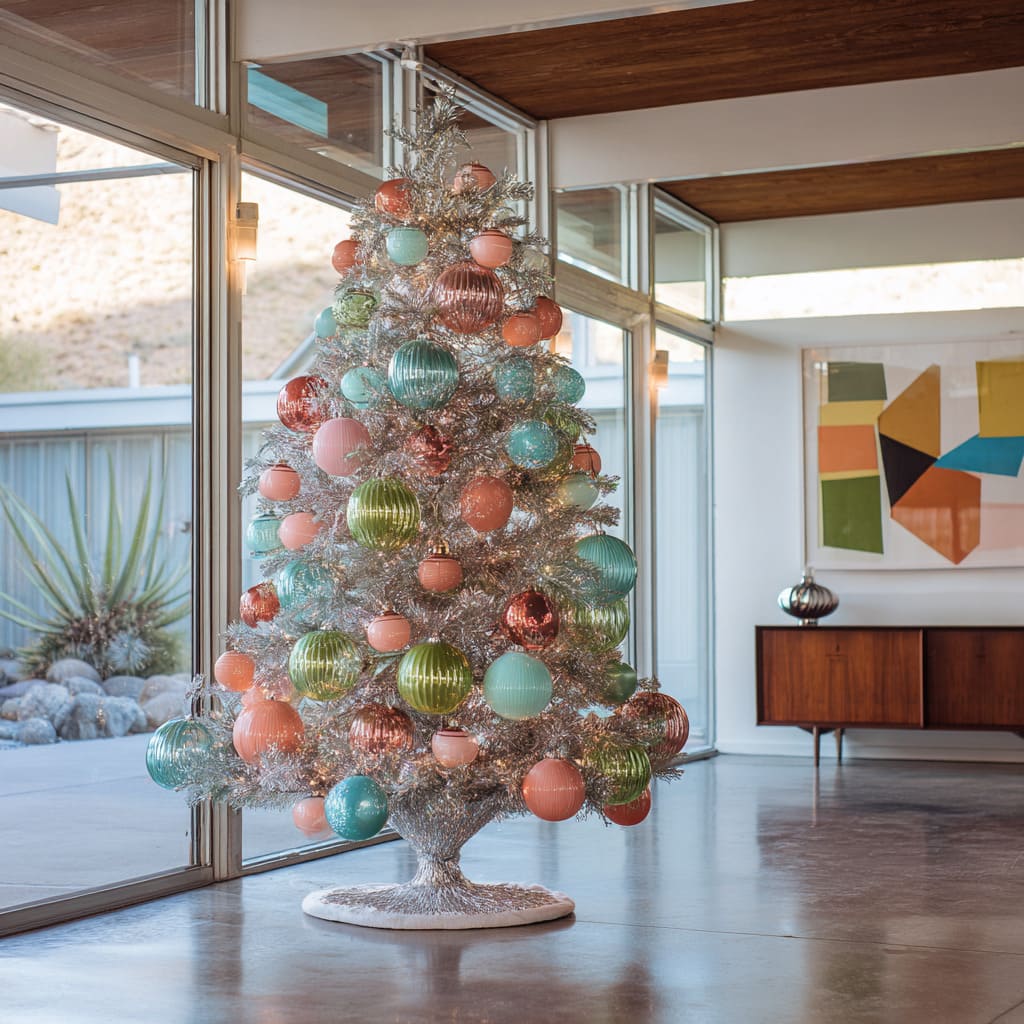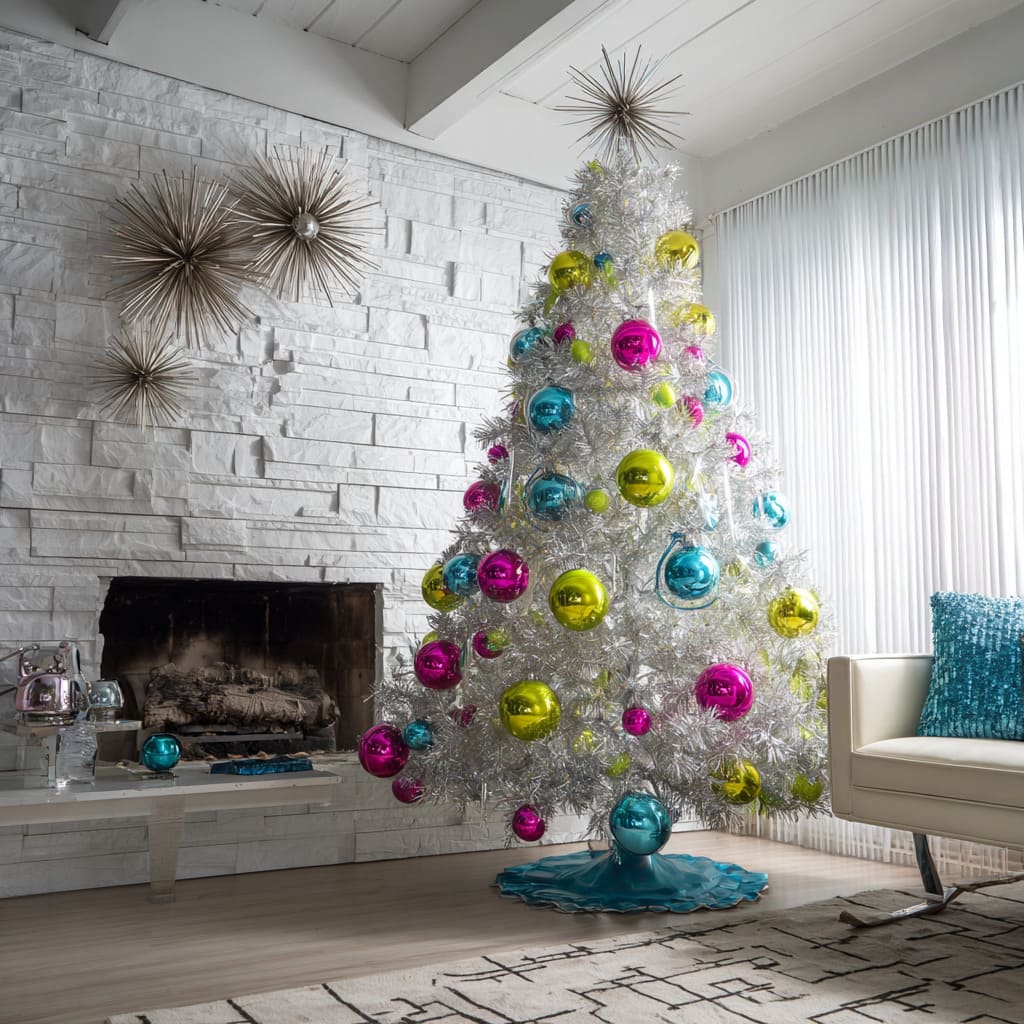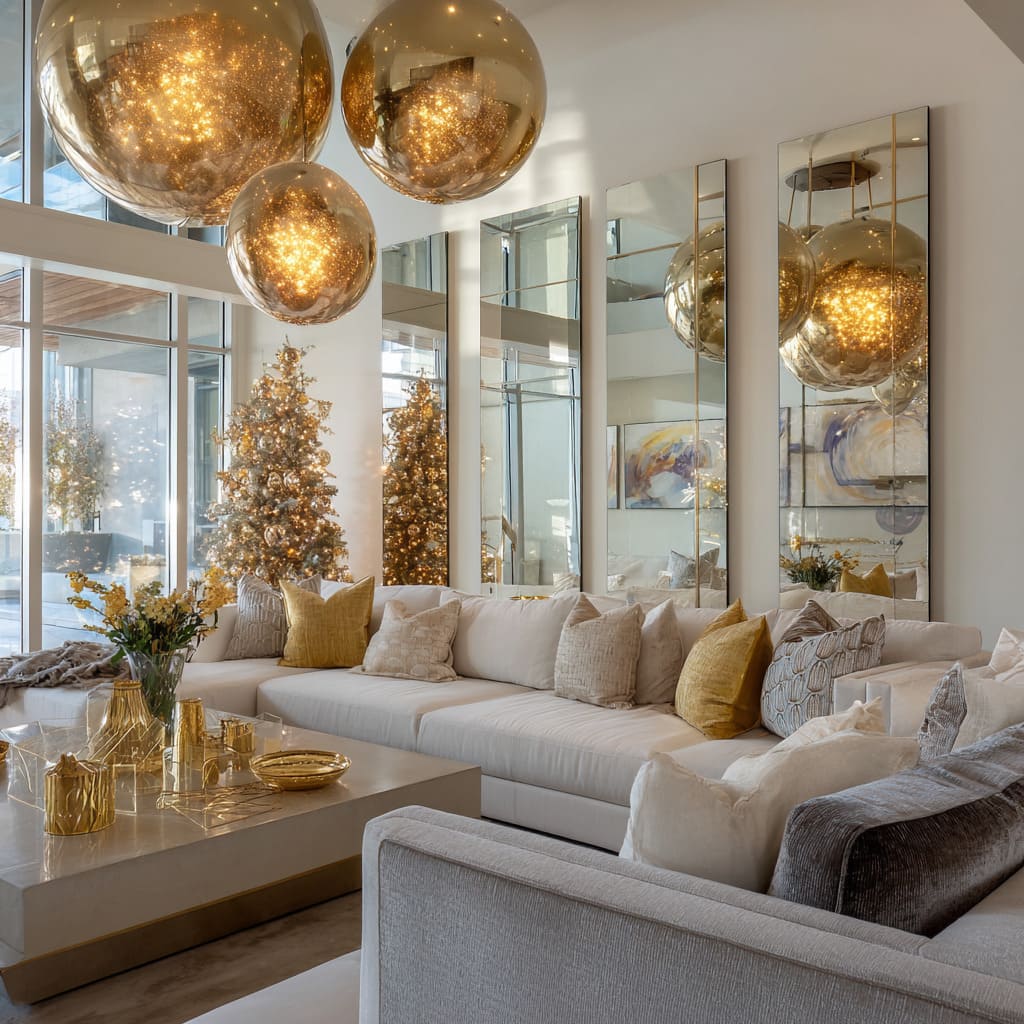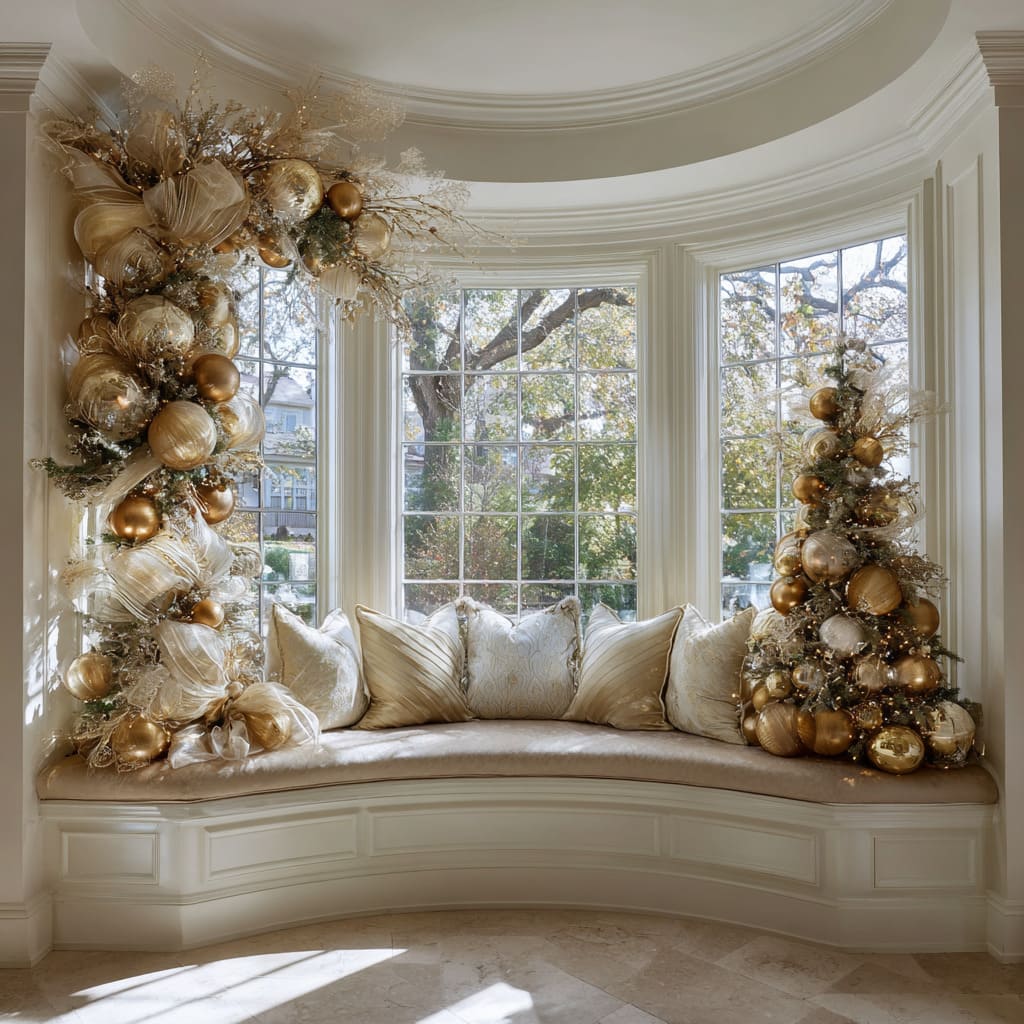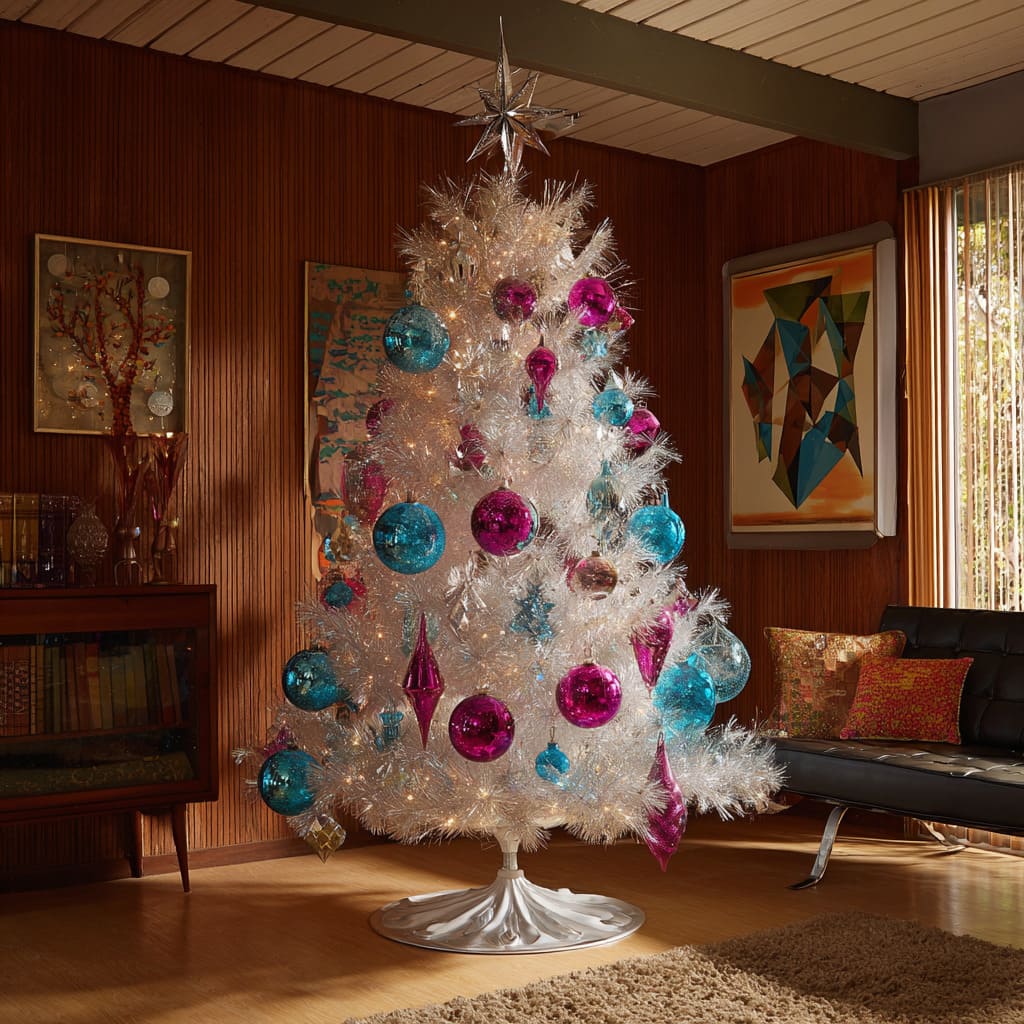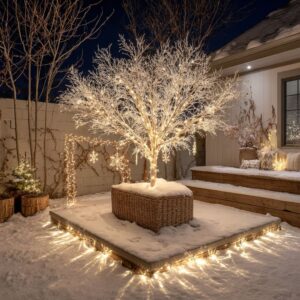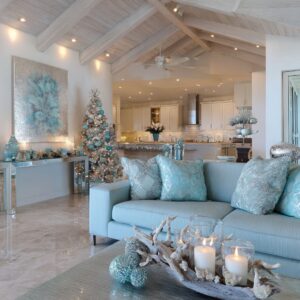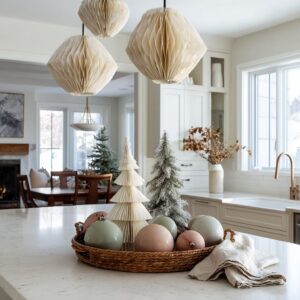Vintage Christmas tree decorating ideas have become less about nostalgia for its own sake and more about reinterpreting memory with the precision of interior styling. It can be used ornament scale, palette discipline, and texture control to translate the visual rhythm of past decades into calm, cohesive compositions.
Such trees don’t simply repeat history; they treat light, shape, and spacing as design systems that make old styles feel newly fluent with contemporary rooms.
Color as the True Storyteller
Vintage color stories work like timestamps. Instead of the red-green triad of classic holiday clichés, each look isolates a particular era’s visual signature and edits it tightly.
Metallic Sophistication
Single-metal palettes—champagne, pewter, copper, or brushed gold—recall department-store glamour while staying clean enough for modern interiors. By limiting hue and varying sheen—matte beside mirror, brushed against frosted—they can be recreated with the shimmer of mercury glass without clutter.
The restrained approach lets daylight and lamplight act as part of the palette itself.
Retro Color Codes
Other trees echo decades through color harmony rather than props:.
- Turquoise and cherry red signal the mid-century boom of chrome diners and toy catalogs.
- Sherbet tones—mint, blush, and coral—speak to optimistic postwar ornament sets.
- Primary brights on white tinsel trees recall 1960s pop graphics.
- Glacier blue with straw gold translates alpine postcards into interior calm.
Each scheme proves that hue, not hardware, defines period character.
Value Ladders and Finish Mapping
It can be built a ladder of values—light to dark—so the eye climbs the tree in calm steps. It’s less about hue and more about how gloss, matte, and frosted finishes distribute brightness across that ladder.
Pale satins near the tips create a soft halo, deeper tones near the trunk form a shaded core, and a few high-gloss notes ride the outer edge like punctuation. The result feels period-correct without noise: tone as structure, finish as rhythm.
Single-Family Metals Without Monotony
When the palette locks into one metal family, variation comes from texture. Brushed champagne absorbs light; hammered pieces scatter it; mirrored planes throw slim lines back into the room.
A composition might read “all gold,” yet it pulses gently because the surfaces disagree just enough to keep the eye moving.
The Power of Scale and Rhythm
A central insight in vintage Christmas tree decor ideas is how proportion replaces abundance. Oversized hearts, snowflakes, and pleated fans turn once-delicate motifs into sculptural punctuation.
Big ornaments alternate with clusters of tiny glass drops so that the tree reads in beats rather than blur. Some compositions even treat the entire tree as a column of light—slim silhouettes mirrored in panels or repeated as pairs—where rhythm, not density, carries the glamour.
Hero-Ornament Cadence
Large forms act like downbeats; medium bulbs and slender finials add syncopation; micro beads and pearl strands create the quiet “hiss” between beats. The pattern is musical rather than symmetrical, with repeated intervals from top to base.
This cadence is what makes an arrangement read clearly from the doorway and still reward a close look.
Cluster Logic vs. Scatter Logic
Classic trees often scatter equally; modern vintage favors islands of similar pieces. Trios of related tones or finishes form small constellations the eye hops between.
It feels curated rather than random, and the spaces between clusters become part of the design—visual rests that keep the whole from feeling busy.
Space and Silence as Modern Luxury
Where traditional trees crowd every branch, the updated language embraces negative space. Air between ornaments lets each texture breathe: tinsel flickers, matte bulbs rest quietly, ribbed glass picks up just one line of glow.
The emptiness signals confidence; it allows vintage materials to coexist with contemporary minimalism. This calm spacing transforms what could feel sentimental into visual clarity—vintage serenity instead of cluttered nostalgia.
The Outline Game
Negative space controls the silhouette. They intentionally leave micro gaps along edges so the tree’s outline stays crisp against walls, windows, or stone.
A smooth edge reads contemporary; a slightly rugged edge leans chalet; a tinsel-fringe edge recalls mid-century aluminum sparkle. The outline is the quiet signature that says which storyline is in play.
Light as the Essential Ornament
No detail separates modern vintage more than the behavior of light. In modern interiors, sparkle is designed, not added.
- Tinsel and aluminum trees use reflection to replace garland; daylight stripes through windows create moving patterns across metallic needles.
- Matte and frosted ornaments scatter rather than flash, recreating the soft, granular shine once achieved by mica dust.
- Interior lighting—pendants, mirrors, glass railings—acts as extension rather than backdrop, turning the entire room into one coordinated glow.
Light becomes the language of emotion: shimmer that recalls candlelit parlors, color-wheel twirls, or winter frost, without reproducing their artifacts.
Surface Tension: How Light Sits on Materials
Matte glass absorbs and releases glow like velvet; frosted ribs break light into tiny strokes; mirrored petals flick thin highlights across nearby objects. The mix creates tension between soak, scatter, and flash.
Trees that feel refined usually let soak and scatter dominate, with flash appearing sparingly where the eye needs a nudge.
Reflection as Composition
Mirrors, lacquer, and polished stone don’t just bounce light—they multiply motifs. A slim tree in front of panels becomes a glowing colonnade; mercury ornaments near a glossy sideboard throw miniature echoes across the room.
Reflection turns a single object into an installation, expanding the scene without adding more items.
Architectural Harmony
A tree’s success often depends on how it converses with its surroundings. Vintage compositions never stand alone.
Bay windows frame them like stages; fireplaces mirror their vertical rhythm; staircases, beams, and pendant chains echo their lines. In lofts and open plans, metallic ornaments pick up finishes from kitchen fixtures or console legs, binding spaces together.
The most sophisticated scenes read like continuous installations rather than seasonal interruptions.
Sightline Choreography
Placement aligns with primary sightlines: a finial drop answers a stair curve; a starburst repeats a chandelier’s ray pattern; ribbon movement tracks the span of a beam. The viewer experiences one continuous gesture from architecture into adornment, which is why the tree never feels like a parked prop.
Families of Vintage Style
1) Department-Store Glamour
Champagne metals, mirrored panels, corsage florals, and tone-on-tone gift wrap create quiet theatricality—luxury told through restraint.
Couture Giftwrap as Ground Plane
Tone-on-tone wrap, fabric-width ribbons, and relaxed bow loops turn the base into a quiet runway. The ground plane reads as part of the dress, not a pile of parcels.
2) Coastal Nostalgia
White or silver trees paired with sea-glass ornaments and shell forms turn beach-town memories into modern light studies.
Fiber-on-Fiber Warmth
Felt, knit, and straw form a layered textile story where sheen is minimal and relief is palpable. The air between pieces is as important as the pieces—each soft shape gets room to breathe.
3) Nordic Craft
Felt hearts, straw stars, and knit textures build warmth through handwork. Scale and negative space keep the story clean and graphic.
4) Mountain Lodge Glow
Flocked branches and icy metallics recall ski chalets yet lean on soft layering instead of red-green contrast.
5) Space-Age Pop
Aluminum trees, jewel-toned glass, and sputnik stars speak to the jet-age fantasy of optimism and design clarity.
Poster Logic on a White Field
Primary brights ride a neutral trunk like graphics on coated paper. One slim garland line traces a curve through the scheme, the way a designer’s pencil would mark movement across a layout.
6) Candy and Lace Parlor
Pastel bulbs, pearl beads, and lace skirts reinterpret domestic nostalgia as dreamlike minimal color fields.
Each family isolates one historical rhythm and amplifies it through scale, texture, and light behavior.
Ornament Echoes
Every successful composition extends beyond the tree. Pillows, artwork, and tabletop decor quietly repeat its colors and materials.
Knit skirts match sofa throws; pendant globes mirror mercury ornaments; candy stripes reappear on cushions or wrapping paper. This echo makes vintage accents feel architectural—embedded rather than attached.
Palette Transfer to Soft Furnishings
Textiles repeat the palette in quieter materials: boucle that hints at frost; velvet that deepens jewel tones; knit that softens candy stripes. Because the hues recur at lower intensity, the room reads cohesive even when the tree carries the shine.
Object Typology Ech
Bowl → bauble, pendant → ornament, ribbed vase → ribbed bulb: everyday objects mirror tree forms at different scales. The echo keeps the story moving beyond the branches, so the whole space shares one visual language.
The Grammar of Bases and Toppers
Bases and toppers function as punctuation marks in such arrangements. At the base: satin puddles resemble evening gowns, knits act like sweaters, lace disks mimic heirloom doilies.
At the crown: starbursts, sprays, or branching filaments carry line and motion upward, replacing figurines with sculptural clarity. Their purpose isn’t narrative but continuity: completing the visual sentence started by the tree’s body.
Bases as Stories of Ground
- Satin pools: dress-hem glamour that catches warm light.
- Knit and faux pelt: winter-sweater comfort, softening metals.
- Lace disks: heirloom table-linen memory, scaled up.
- Sculptural stands: mid-century clarity that preserves silhouette.
Toppers as Direction, Not Characters
- Starbursts: radial energy that repeats lighting fixtures.
- Branch sprays: continue ribbon movement vertically.
- Filament spikes: a quiet nod to tinsel, turning pin lights into tiny comets.
The Aesthetic Logic of Modern Nostalgia
Behind every scheme lies a rule set that keeps sentiment stylish:.
- Choose one historic language and stay loyal to it.
- Express it through palette and proportion rather than props.
- Leave breathing space; air is part of the decoration.
- Let the room’s architecture and lighting finish the effect.
This structure turns recollection into design—vintage Christmas decorating ideas that look composed rather than staged.
Emotion, Memory, and the Modern Eye
The beauty of old fashioned Christmas ideas lies not in replication but in translation. What once glittered in store windows now glows quietly in curated homes: smaller gestures, broader textures, fewer colors, deeper thought.
Vintage Christmas tree ideas work today because they balance emotion with order—the comfort of memory shaped by design intelligence. Each metallic glint, pastel bulb, or felt heart is less an antique souvenir than a reminder that nostalgia, when edited, becomes timeless style.

